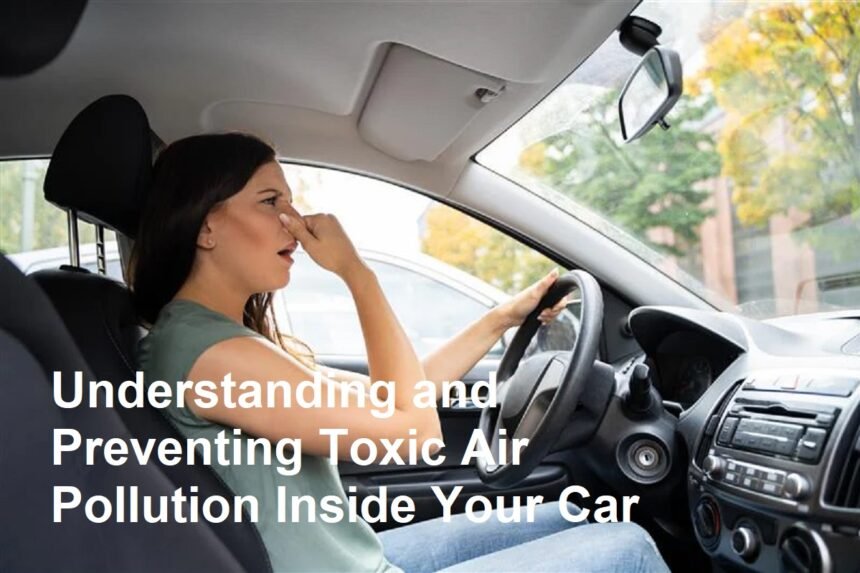Introduction
Cars are an integral part of daily life, offering convenience, mobility, and independence. However, many people overlook the potential health risks associated with the air quality inside their vehicles. Over time, the cabin air can become contaminated with harmful pollutants, including toxic air contaminants that pose serious health risks. Understanding these dangers and knowing how to prevent or minimize exposure is crucial for maintaining good health.
What Are Toxic Air Contaminants in Cars?
Inside your vehicle, several factors can contribute to the accumulation of harmful airborne substances. These include:
- Chemical emissions from interior materials: Certain plastics, fabrics, and seat materials release volatile organic compounds (VOCs) over time. These chemicals can cause headaches, dizziness, allergic reactions, or more severe health effects.
- Air pollution from outside: Pollutants such as nitrogen dioxide, carbon monoxide, and particulate matter from traffic emissions can infiltrate the vehicle through ventilation systems.
- Mold and bacteria: Moisture trapped inside the car, especially in air conditioning systems or carpets, can promote mold growth that releases spores and toxins.
- Cigarette smoke and other pollutants: If smoking occurs inside the vehicle, harmful chemicals and carcinogens can linger, impacting passengers’ health.
These substances, especially when accumulated over time, can lead to health problems such as respiratory issues, allergies, asthma exacerbation, or even long-term illnesses.
How Dangerous Are These Contaminants?
The health risks depend on the concentration of pollutants and the duration of exposure. Short-term exposure to high levels of toxic air inside the car can cause immediate symptoms like headaches, nausea, or eye irritation. Prolonged exposure to lower levels of harmful chemicals can contribute to chronic respiratory diseases, cardiovascular problems, and even cancer.
Children, elderly passengers, and people with pre-existing health conditions are more vulnerable to these risks. As such, maintaining good indoor air quality in your vehicle is essential for protecting everyone’s health.
How to Detect and Identify Toxic Air in Your Car
Detecting toxic air contaminants is not always straightforward without specialized equipment. However, some signs may indicate poor air quality:
- Persistent bad smell or chemical odors
- Unusual dust or mold growth
- Allergic reactions or respiratory discomfort when driving
- Visible mold or mildew in the air conditioning vents or carpets
Regularly inspecting your vehicle for signs of mold, dampness, or unusual odors is a simple step toward early detection.
Practical Tips to Minimize Exposure to Harmful Air in Your Car
- Regular Cleaning and Maintenance:
Keep your car clean by vacuuming carpets, seats, and air vents frequently. Clean the air conditioning system and replace filters according to the manufacturer’s recommendations to prevent mold buildup and eliminate dust. - Use Air Purifiers or Fresh Air Intake:
Portable air purifiers designed for cars can help filter out pollutants. When possible, set your ventilation system to circulate fresh air from outside to improve air quality, especially in areas with heavy traffic or pollution. - Avoid Smoking Inside the Vehicle:
Smoking introduces a host of toxic chemicals into the cabin air. Quitting smoking inside your car significantly reduces indoor pollutant levels. - Minimize the Use of Harsh Chemicals:
Avoid using heavily scented air fresheners, cleaning agents, or aerosols inside your car. Opt for natural or fragrance-free products to limit VOC emissions. - Park in Cleaner Areas:
Whenever possible, park your vehicle in shaded or covered areas away from busy roads to reduce exposure to external pollutants. - Regularly Replace Air Filters:
Cabin air filters trap dust, pollen, and other pollutants. Replace them as recommended to ensure they function effectively. - Check for Mold and Moisture:
Regularly inspect the air conditioning system and carpets for mold growth. Dry out damp areas promptly using dehumidifiers or professional cleaning if necessary.
Final Thoughts
Your vehicle’s interior environment significantly impacts your health, especially during long drives or daily commutes. By being aware of the sources of toxic air contaminants inside your car and adopting simple but effective practices, you can drastically reduce exposure and safeguard your well-being.
Don’t overlook your car’s air quality — maintaining a clean, well-ventilated, and contaminant-free environment inside your vehicle is a wise step toward healthier living.












